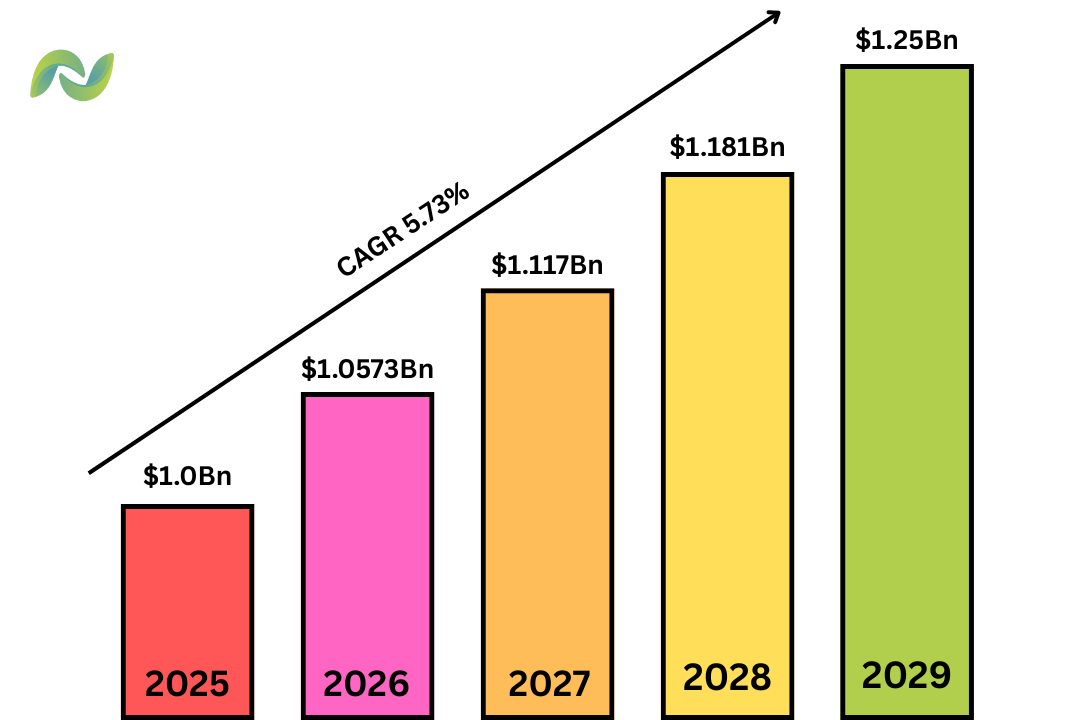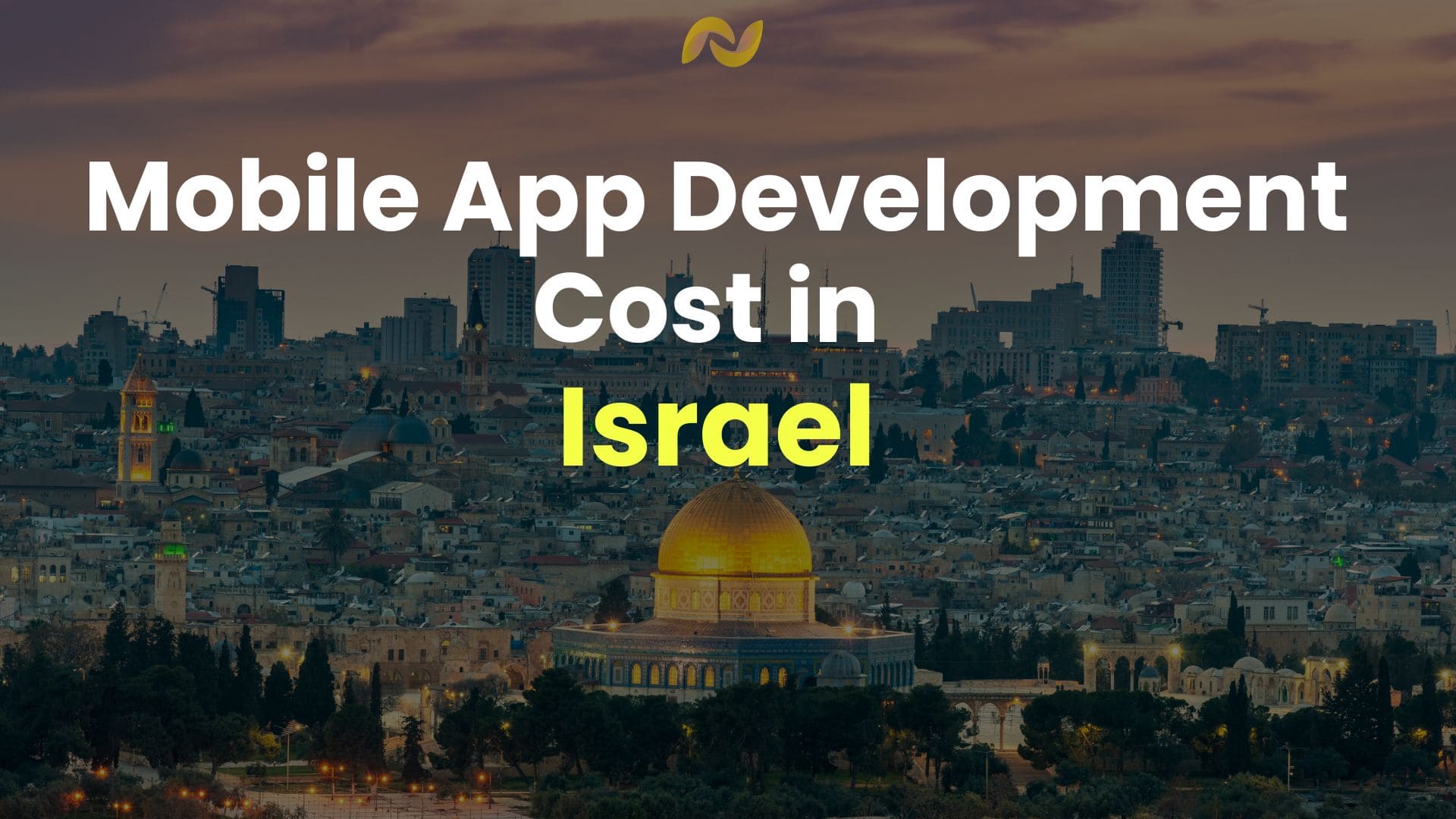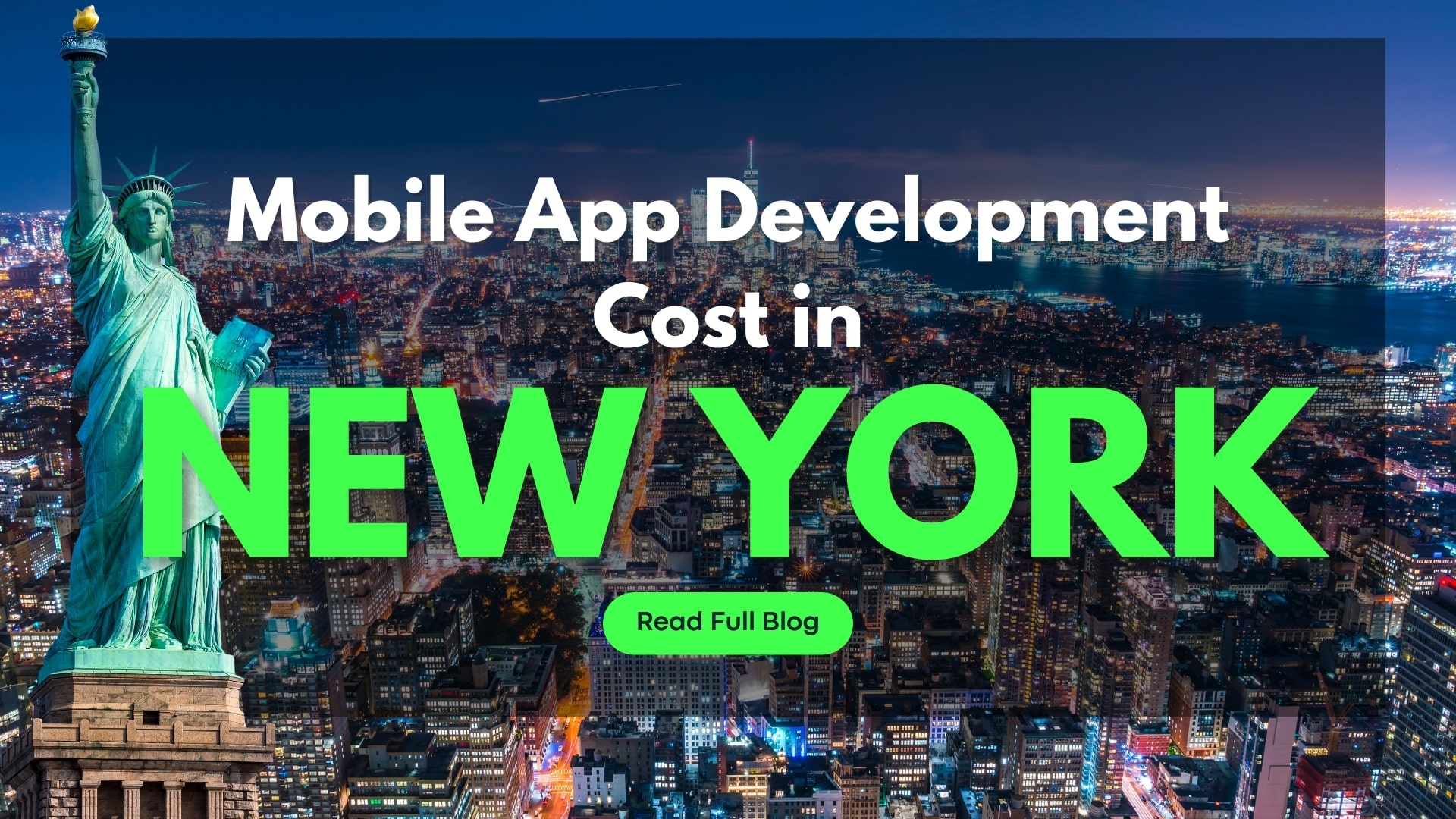How Much Does It Cost to Develop a Mobile App in Israel?
Israel is one of the most technologically advanced countries in the world and a growing tech hub in the Middle East. In 2025, the mobile app development market is expected to generate a revenue of $1.0 billion. Many businesses are leveraging the digital realm to reach their audience more effectively and expand their presence across a wider range of domains. Mobile applications are one of the major factors in helping businesses in the digital space, and in this guide, we will discover the key factors that influence the mobile app development cost in Israel. Let’s dive into the blog.
Table of Contents
ToggleMarket Statistics of Mobile App Development in Israel

According to a report by Statista, the market cap of app development in Israel is $1.0 billion in 2025 and with a CAGR of 5.73%, it is expected to reach $1.25 billion in 2029.
Types of Mobile Applications and Their Average Development Costs in Israel
[1] Cross-Platform Apps
Cross-platform applications are developed to work on a single platform, such as Android or iOS. The benefit of these apps is that they require a single codebase to develop for multiple platforms. Also, these apps can fully utilize the hardware and software resources of the device or the platform and are more responsive with a better UI/UX.
Cost: ₪38,155 to ₪343,396 ($10,000 to $90,000) or more, depending on the complexity of the project.
[2] Native Apps
On the other hand, native apps are those apps that are designed and developed to work on a single platform only. For example, an app developed for Android won’t work on iOS and vice versa. Native apps can offer native features such as device location tracking, access to device microphone and camera, etc.
Cost: ₪57,232 to ₪381,551 ($15,000 to $100,000) or more, depending on the complexity of the project.
[3] Web Apps
Web applications are designed and developed using web technologies such as HTML, CSS, JavaScript, etc, and can be easily accessed by any web browser from any device. There are many benefits of a web app, such as a simple UI/UX, accessibility, scalability, etc. The only major disadvantage is that web apps require an internet connection to access and use.
Cost: ₪38,155 to ₪381,551 ($10,000 to $100,000) or more, depending on the complexity of the project.
[4] Progressive Web Apps
Progressive Web Apps are a mix of native apps and web apps. These apps can be accessed via a web browser and offer a native-like performance on any platform. These apps offer various advantages over traditional web applications, such as offline functionalities, native app-like features, automatic updates, etc.
Cost: ₪38,155 to ₪419,707 ($10,000 to $110,000) or more, depending on the complexity of the project.
[5] Gaming Apps
Gaming apps need no introduction. Gaming apps are of two types: 2D and 3D. 2D apps include simple side-scrolling or puzzle games. These apps require less time and resources to develop. While 3D games require advanced graphics and animation and a larger team, which costs much more to develop.
Cost: ₪76,310 to ₪19,07,759 ($20,000 to $500,000) or more, depending on the complexity of the project.
Major Factors Influencing Mobile App Development Cost in Israel
[1] App Size and Complexity
App size matters a lot when it comes to determining the mobile app development cost. A basic app would cost less than a medium-sized or large-sized app. A basic app would contain fewer features and functionalities than larger apps, and hence, the overall cost of mobile app development is determined by this factor.
[2] Platform
Android and iOS are the two major platforms that are widely used in mobile devices. You can select native app development for individual platforms, but it would cost more. If you have a strict budget, you can opt for cross-platform app development that uses a single codebase to develop an app for multiple platforms.
[3] Development Team
There are 2 factors associated with the development team. The first one is the size of the team. A small team would charge less than a large team, but the delivery time of the project would be longer if the app is highly complex. The team should be selected as on the size and complexity of the app. The second one is the location. A team situated in the USA would charge more than a team situated in India or Malaysia.
[4] Backed Infrastructure
The backend infrastructure holds a major role in the overall development cost of the mobile app. The backend consists of the server, databases, storage, and security measures that protect the app, etc. The more robust and complex the backend infrastructure, the more costly the app will be.
[5] Testing and Quality Assurance
Testing is one of the crucial parts of the whole app development process. The testing phase ensures that the app is bug-free and error-free and works fine without any issues. The testing phase consists of many different types of testing, such as unit testing, integration testing, functional testing, non-functional testing, etc. The types of tests required depend on the complexity of the app and the duration of the tests. Thus contributing to the cost.
[6] Marketing
Marketing is an essential part of businesses to promote their products and services to reach a wider audience. Since a mobile app is also a product, it surely needs extensive marketing campaigns to promote and reach its targeted audience. Launching ad campaigns requires significant investment and further increases the overall development costs.
[7] Security Measures
The security of the app is something that should not be negotiated under any circumstances. Your app will be used by numerous user, and it is very important to secure their data and privacy. Thus, implementing robust security measures such as end-to-end encryption, biometric login, and two-factor authentication further contributes to the cost.
[8] UI/UX Design
UI/UX is the interface of the app that is accessible to the users. A good UI/IUX depends upon certain factors such as the complexity of the animations, level of detailing, cross-platform consistency, etc. The cost of UI/UX depends upon several things, such as the size and complexity of the app, the development time required, iteration, etc.
Essential Features and Their Integration Cost in Mobile Applications
[1] Essential Features of Mobile Applications
{1} User Profile
- Description: Users can create their personalized profile in the app.
- Cost: ₪1,907 to ₪4,197 ($500 to $1,100).
{2} Basic Reporting and Analytics
- Description: Users can easily create reports related to app usage, data usage, and more.
- Cost: ₪3,052 to ₪5,723 ($800 to $1,500).
{3} Push Notifications
- Description: Users can stay up-to-date with any information.
- Cost: ₪1,907 to ₪4,578 ($500 to $1,200).
{4} Offline Functionality
- Description: Users can use the mobile app’s features even without the internet.
- Cost: ₪4,578 to ₪6,867 ($1,200 to $1,800).
{5} Search Option
- Description: Search for any setting or feature, etc.
- Cost: ₪1,907 to ₪4,578 ($500 to $1,200).
[2] Advanced Features of Mobile Applications
{1} Payment Gateway
- Description: Execute financial transactions through the app.
- Cost: ₪4,960 to ₪12,209 ($1,300 to $3,200).
{2} In-App Messaging
- Description: Chat with anyone using the built-in messaging option.
- Cost: ₪5,341 to ₪10,683 ($1,400 to $2,800).
{3} Social Media Sharing
- Description: Share anything on social media using the mobile app.
- Cost: ₪2,289 to ₪6,104 ($600 to $1,600).
{4} Map and Navigation
- Description: Users can access the map and navigation features.
- Cost: ₪5,723 to ₪13,735 ($1,500 to $3,600).
{5} AR/VR Integration
- Description: Utilize the power of Augmented Reality and Virtual Reality for virtual experience in learning and gaming.
- Cost: ₪9,920 to ₪29,761 ($2,600 to $7,800).
{6} AI/ML Integration
- Description: AI/ML is used to easily automate tasks and solve complex problems, and create chatbots.
- Cost: ₪10,683 to ₪38,155 ($2,800 to $10,000).
{7} Voice Commands
- Description: Users can use voice commands to control the mobile app.
- Cost: ₪9,538 to ₪24,800 ($2,500 to $6,500).
{8} Video Streaming
- Description: Users can watch multimedia content within the app.
- Cost: ₪11,446 to ₪28,616 ($3,000 to $7,500).
{9} Multi-Language Support
- Description: Users can select their preferred language for using the app.
- Cost:₪9,538 to ₪17,169($2,500 to $4,500).
{10} Security Features
- Description: Robust security features, such as 2-factor authentication and biometric login, ensure data protection and user privacy.
- Cost: ₪11,446 to ₪40,062 ($3,000 to $10,500).
How the Latest Technologies Affect the Mobile App Development Cost in Israel
[1] Artificial Intelligence and Machine Learning
- Description: AI and ML enable automation in the mobile app, provide personalized user experience, enhanced decision making, etc.
- Cost: ₪18,684 to ₪112,108 ($5,000 to $30,000).
[2] Internet of Things
- Description: IoT enables the connection of smart devices with mobile phones and controls them using dedicated mobile apps.
- Cost: ₪14,947 to ₪130,793 ($4,000 to $35,000).
[3] Blockchain
- Description: Blockchain ensures secure and transparent transactions.
- Cost: ₪14,947 to ₪149,477 ($8,000 to $40,000).
[4] Virtual Reality
- Description: Mobile users can explore a virtual world for gaming and learning using their mobile devices and VR headsets.
- Cost: ₪37,369 to ₪205,531($10,000 to $55,000).
[5] Augmented Reality
- Description: AR creates digital objects onto the real-world environment, and users can view the object using their mobile application.
- Cost: ₪41,106 to ₪186,847 ($11,000 to $50,000).
[6] Quantum Security
- Description: Develop advanced cryptographic techniques to block attacks from quantum computers and classical computers.
- Cost: ₪56,054 to ₪224,216 ($15,000 to $60,000).
Frameworks
[1] React Native
- Description: It is used to develop cross-platform mobile applications with a single codebase.
- Cost: ₪18,684 to ₪112,108 ($5,000 to $30,000).
[2] Flutter
- Description: It is used to create cross-platform applications with reusable code for mobile.
- Cost: ₪18,684 to ₪130,793 ($5,000 to $35,000).
[3] Xamarin
- Description: It is also used to create cross-platform mobile applications with near-native performance.
- Cost: ₪22,421 to ₪112,108 ($6,000 to $30,000).
[4] Ionic
- Description: Used to develop cross-platform applications with web features.
- Cost: ₪56,054 to ₪224,216 ($8,000 to $30,000).
[5] Progressive Web Apps
- Description: PWAs offer web application development with near-native performance.
- Cost: ₪33,632 to ₪205,531 ($9,000 to $55,000).
[6] Low-Code Platforms
- Description: Easily develop mobile apps and web applications using pre-built modules with minimal coding.
- Cost: ₪18,684 to ₪149,477 ($5,000 to $40,000).
Follow a Step-by-Step Process of Mobile App Development

[1] Requirement Gathering and Feasibility Analysis
This is the first stage of the mobile app development process. In this stage, the idea of the app project is discussed with the development team. The client explains the key features and functionalities, and extensive feasibility tests are conducted to verify whether the project idea is practical or not in terms of budget, timeline, legal compliance, etc, and suggest any changes to meet the criteria. Once the analysis is completed, an SRS document is made stating all the features and functionalities of the app and approved by the client.
Cost Estimate: ₪7,473 to ₪44,843 ($2,000 to $12,000) or more, depending on the project.
[2] Create a Project Plan
After the first stage, the SRS is analyzed, and a comprehensive project plan is created. Planning ensures the project stays on track with minimum errors and risks. A project plan includes the selection of the development methodology, choosing the appropriate tech stack, dividing the project requirements into different modules, creating clear project milestones, and much more.
Cost Estimate: ₪11,210 to ₪52,317 ($3,000 to $14,000) or more, depending on the project.
[3] Develop Wireframes and Prototype
In this stage, wireframes of the app project are made. Wireframes are used to define the basic structure of the mobile app, such as the placement of buttons, menus, and navigation among different screens, as well as key features and functionalities. Based on the wireframe, a working prototype of the mobile app is developed that contains the basic features and functionalities to get an idea of what the app would look like after it is fully developed.
Cost Estimate: ₪18,684 to ₪74,738 ($5,000 to $20,000) or more, depending on the project.
[4] Develop Frontend
The front end of the app is developed with all the features and functionalities mentioned in the SRS document. The Frontend is developed, ensuring an engaging UI/UX with custom animations and graphics if required. Also, ensure the frontend is compatible with various devices.
Cost Estimate: ₪14,4843 to ₪112,108 ($12,000 to $30,000) or more, depending on the project.
[5] Create Backend
The backend of the app is the most crucial part, as it is the backbone of the whole mobile application. There are several essential steps performed in this stage, such as setting up the server, developing and integrating APIs, implementing business logic and tools such as analytics and reporting, and ensuring the app is highly scalable for future upgrades etc.
Cost Estimate: ₪56,054 to ₪149,477 ($15,000 to $40,000) or more, depending on the project.
[6] Testing and Quality Assurance
After the app is fully developed, testing of it is done to ensure the app works fine without any issues, and also to ensure the overall quality as per the client’s expectations. There are many testing procedures performed, such as unit, integration, security, functional, non-functional, etc. Each type of testing has its purpose for execution.
Cost Estimate: ₪14,947 to ₪112,108 ($4,000 to $30,000) or more, depending on the project.
[7] Deployment and Launch
Now it is time to deploy the app on the Play Store or App Store to be used by the users. Also, extensive marketing campaigns should be done to promote the app on a larger scale. Marketing also adds to the additional costs.
Cost Estimate: 7,473 to ₪44,843 ($2,000 to $12,000) or more, depending on the project.
[8] Post-Launch Maintenance and Support
The mobile app needs regular maintenance and updates to ensure it works fine without any issues, bugs, or errors. The app also needs new features and functionalities to keep it engaging for the users and ensure it meets the changing market trends to keep up with the competitors.
Cost Estimate: ₪4,484 to ₪37,369 ($1,200 to $10,000) or more, depending on the project.
Leverage the Latest Tech Stack for Mobile App Development
[1] MEAN Stack: MongoDB, Express.js, Angular.js, Node.js.
[2] LAMP Stack: Linux (OS), Apache, MySQL, PHP.
[3] MERN Stack: MongoDB, Express.js, React.js, Node.js.
[3] Native Development: Java, Kotlin.
[4] Cross-Platform Development: Flutter, Xamarin, Ionic, Dart (Programming Language).
[5] Cloud: AWS, GCP, Azure.
[6] Serverless Architecture: AWS Lambda, Google Cloud Functions, Azure Functions.
[7] Testing Tools: Appium, Espresso, TestFlight
[8] APIs: REST, SOAP, GraphQL.
[9] Project Management Tools: Jira, MS Project, Trello.
[10] CI/CD Tools: Jenkins, GitLab.
[11] Version Control: Git, BitBucket, AWS CodeCommit.
Strategies to Monetize Your Mobile Application
[1] In-App Purchases
This is one of the most popular monetization models. In this, you can offer an in-app store for the users to purchase premium items such as discount coupons, gift cards, ad-free experience, etc, to be used and consumed within the mobile application.
[2] Freemium Model
Freemium models offer a free app to download and use with the basic features and functionalities, but require money to purchase the required feature or have the full application with all the features.
[3] In-App Advertisements
You can offer several ad slots within your app and charge brands and companies to advertise their products and services on your mobile app. The ad slots should be placed in such a way that it does not obstruct the user interface and ruin the user experience.
[4] Subscription Model
In this model, you can offer a set of features and functionalities divided among several packages. The higher the package, the more features and functionalities it would offer. Users can select the package on a monthly or yearly basis as per their needs and goals.
Some Useful Tips to Reduce the Mobile App Development Cost in Israel
[1] Leverage Cross-Platform Solutions
Cross-platform development uses a single codebase for multiple platforms and removes the extra cost of developing a single app for individual platforms. Thus, it is more cost-efficient than native app development.
[2] Utilize Third-Party APIs
Use third-party APIs such as payment gateway, maps, and GPS, etc, as it requires licensing fees that are generally less costly than developing a custom API from starting.
[3] Set Clear Requirements
Setting clear goals and requirements allows the developers to focus on the essential aspects of the mobile application and avoid spending time and resources on unnecessary features and functionalities.
[4] Choose the Right Development Team
Select the right team size according to the complexity of your app development project. Also, the location of the team would affect your overall budget. Choose wisely.
[5] Leverage Cloud Platforms for Scalable Infrastructure
Cloud platforms such as AWS and Azure offer subscription plans, and businesses can utilize them to develop scalable infrastructure for their mobile apps at a lower cost.
How to Choose a Mobile App Development Firm in Israel in 2025?
Israel has many mobile app development companies in 2025. But to select the right one, it is important to know some essential qualities that a company should possess. Some of the must-have qualities include having clear project milestones, having end-to-end and transparent communication with the client, and timely delivery of the project etc. Next Olive is the leading mobile app development company in Israel that is trusted by clients in major cities of Israel, such as Jerusalem, Haifa, Rishon LeZion, Petah Tikva, etc and across 20 countries. The company has expertise of over 13 years and has more than 200 mobile app developers. You can hire them to maximize your app quality within your budget.
Conclusion
In conclusion, investing in mobile app development is a significant step and should be carefully planned and executed. Moreover, the mobile app development cost depends on several factors such as type, size, platform, complexity, technology used, etc. Also, it is important to select the right development team and, if possible, consider outsourcing your project to a mobile app development company in Israel.
Frequently asked questions (FAQs)
The time required for mobile application development depends upon several factors such as type, size, platform, and overall complexity of the app. Here is a general breakdown of the time required:
- Basic Mobile Application: 2 to 3 Months.
- Medium-Complexity Mobile App: 3 to 7 Months.
- Highly Complex Application: 7 to over 12 Months.
Here is the estimated cost of some of the widely used types of mobile applications:
Android app development cost: ₪18,793 to ₪112,762 ($5,000 to $30,000) or more.
iOS app development cost: ₪26,311 to ₪187,938 ($7,000 to $50,000) or more.
Flutter app development cost: ₪18,793 to ₪150,350 ($5,000 to $40,000) or more.
E-commerce app development cost: ₪37,587 to ₪338,288 ($10,000 to $80,000) or more.
We use the Waterfall model for projects with fixed requirements and the Agile model for developing projects with changing or variable requirements.








